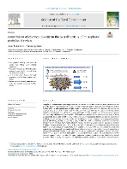Contribution of chemical toxicity to the overall toxicity of microplastic particles: A review

Publication date
2024Published in
Science of the Total EnvironmentVolume / Issue
957 (December)ISBN / ISSN
ISSN: 0048-9697ISBN / ISSN
eISSN: 1879-1026Metadata
Show full item recordCollections
This publication has a published version with DOI 10.1016/j.scitotenv.2024.177611
Abstract
Nanoplastics and microplastics are of growing research interest due to their persistence in the environment and potential harm to organisms through physical damage, such as abrasions or blockages, and chemical harm from leached additives and contaminants. Despite extensive research, a clear distinction between the physical and chemical toxicity of plastic particles has been lacking. This study addresses this gap by reviewing studies examining both toxicity types, focusing on environmentally relevant leachates. The chemicals used in plastics manufacturing, which number over 16,000, include additives, processing aids, and monomers, many of which pose potential hazards due to their toxicity, persistence, and bioaccumulation. Studies typically use extraction or leaching methods to assess chemical toxicity, with leaching more closely mimicking environmental conditions. Factors influencing leaching include plastic type, particle size, and environmental conditions. A systematic literature search identified 35 relevant studies that assessed the toxicity of plastic particle suspensions and their leachates. Analysis revealed that, in 52 % of the cases, both the suspension and leachate had toxic effects, while in 35 % of the cases, toxicity was attributed to the suspension alone. At 13 %, only the leachate was toxic. This suggests that leachates contribute significantly to overall toxicity. However, the results vary widely depending on the experimental conditions and plastic type, highlighting the complexity of microplastic toxicity. The preparation methods used for leachates significantly influence toxicity results. Factors such as leaching time, particle size, and separation techniques affect the concentration and presence of toxic chemicals. Additionally, washed particles-those subjected to procedures for removing leachable chemicals-often showed reduced toxicity, although the results varied. This underscores the need for standardized methods to compare studies better and understand the relative contributions of physical and chemical toxicity to microplastic pollution.
Keywords
leachates, microplastic suspension, microplastic toxicity, physical and chemical toxicity, plastic additives
Permanent link
https://hdl.handle.net/20.500.14178/2743License
Full text of this result is licensed under: Creative Commons Uveďte původ 4.0 International




